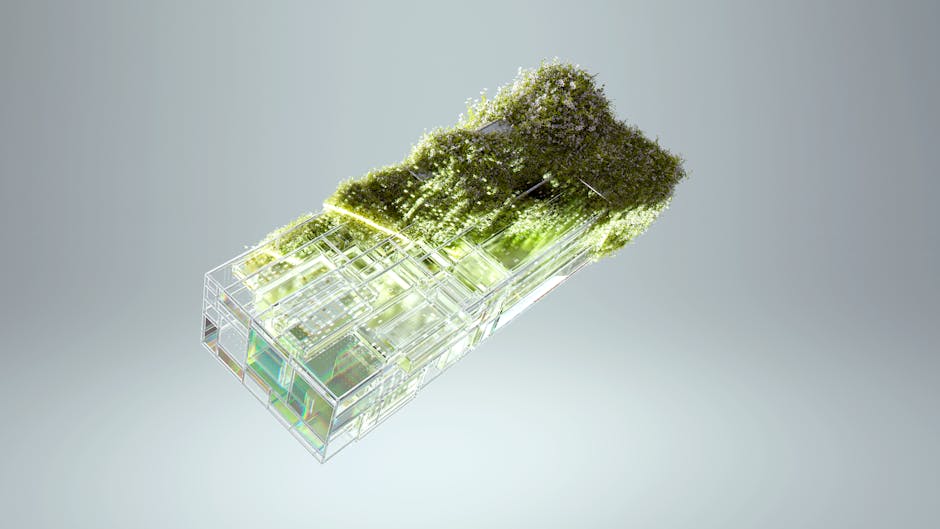Revamping EV Interiors: Nature’s Touch for Enhanced Travel Comfort
The automobile industry is undergoing a seismic shift, and one of the most fascinating elements of this evolution is found within the electric vehicle (EV) cabin. As manufacturers embrace new technologies and design philosophies, the aesthetic and functional aspects of EV interiors are elevating beyond simple minimalism. Increasingly, they’re drawing inspiration from nature through biophilic design. This shift is not merely about aesthetics; it's about enhancing well-being on the road. Let's explore how nature-inspired features are revolutionizing the EV experience and pushing the boundaries of conventional automotive design.
Understanding Biophilic Design and Its Relevance to EVs

Biophilic design isn’t just a trendy phrase thrown around by architects and interior designers; it’s a design philosophy rooted in our intrinsic connection to nature. The term refers to a style that incorporates natural elements—like light, plants, and organic materials—into man-made environments. It’s become particularly relevant within the automotive industry, where car manufacturers are blending nature-inspired features into their EV models to create comforting and rejuvenating spaces for drivers and passengers alike.
Studies suggest that our connection to nature can significantly enhance mood, reduce stress, and promote overall well-being. As more individuals spend time in their vehicles due to urbanization and remote work patterns, creating a cabin that supports mental health is not just a benefit, but a necessity. Car makers are beginning to recognize that the interior of an EV can offer much more than just a mode of transport— it can be an oasis for the human mind amidst the chaos of urban life.
The Shift from Minimalism to a Nature-Inspired Aesthetic

In the early days of EV design, the trend veered toward extreme minimalism. Hybrids and electrified models typically emphasized sleek lines and simplified controls, epitomizing modern technology-driven aesthetics. However, while these designs have their advantages—like reducing clutter and focusing on essential controls—a new trend is surfacing: integrating biophilic elements that invite nature into the cabin.
Imagine sitting in a vehicle surrounded by soft, natural light filtering through large panoramic windows, accented by wooden textures and living plants—this is increasingly becoming a reality in various higher-end and even mid-range EV models. This shift allows manufacturers to forge a deeper emotional connection with drivers and passengers, making the experience of travel not only practical but enjoyable.
Nature-Inspired Features Enhancing Well-Being

Natural Materials

Using natural materials such as wood, stone, and even recycled textiles, manufacturers are creating inviting environments. For example, Volvo’s recent designs showcase how sustainable wood trim can evoke warmth and comfort, complementing the clean technological elements of EVs. This not only enhances the visual appeal but also contributes to a tactile experience that resonates with human senses.
Ambient Lighting

Lighting plays a crucial role in establishing mood. Color temperatures mimicking natural light cycles can potentially influence driver alertness and passenger relaxation. Audi, for instance, is integrating customizable ambient lighting systems that allow users to adjust the atmosphere according to their preferences, effectively transforming the vehicle into a relaxing retreat.
Air Quality and Plant Life

Integrating living plants into the cabin, reminiscent of green walls in modern architecture, is another innovative foray into biophilic design. Companies like Citroën have proposed vehicles with non-toxic plants, enhancing air quality and providing a touch of life amidst the artificial setting. Air purification systems that utilize natural features can promote a healthier driving environment, making trips feel fresher and more invigorating.
Acoustic Design

Driving is often accompanied by external noise, which can compromise mental well-being. Many EVs are prioritizing soundscaping techniques—designing the interior to minimize road noise while incorporating soothing sound elements inspired by nature. The tranquility of an EV cabin thus becomes a cocoon, allowing for more peaceful journeys.
The Psychological Benefits of a Nature-Inspired Cabin

The move toward biophilic design isn’t simply about making vehicles seem more attractive or trendy. There’s a psychological underpinning that suggests an environment enriched with nature can profoundly influence mental health. As urban centers become more populated and stressful, creating a calming space within vehicles can offer drivers sanctuary amidst chaos.
A study published in the Journal of Environmental Psychology highlights how exposure to nature-inspired environments can enhance cognitive function and reduce mental fatigue. This makes the cab experience not just about driving but also about mental recovery. Electric vehicles, by their very nature, are already a cleaner, quieter alternative to traditional vehicles, but adding elements that mimic natural comfort can take the driving experience to the next level.
Innovations Leading the Charge

Smart Technology Integration
As car manufacturers push the envelope with smart technology, they are also incorporating biophilic elements into these innovations. Smart windows that adjust to sunlight can help regulate cabin temperature and light exposure, mirroring natural cycles. Such advancements not only enhance comfort but also reduce energy consumption within the vehicle.
Artificial Intelligence’s Role in Enhancing the Interior Experience
AI-powered systems can optimize various internal features based on the preferences of passengers. From climate control that adjusts to individual comfort levels to personalized interior lighting that can simulate different environments, tech meets nature with this integration. For more on how AI influences the driving experience, check out our article on AI-Powered Personalization in EVs.
Future Concepts and Prototyping
Manufacturers are increasingly willing to experiment conceptually. Toyota has introduced prototypes that explore the concept of modular living spaces within their EV cabins, emphasizing flexibility and comfort alongside an aesthetic rooted in nature. These innovative designs could redefine how people perceive mobility, transforming vehicles from mere transport to holistic living spaces.
Biophilic Design as a Compelling Selling Point
As the competition in the EV market intensifies, manufacturers are recognizing the importance of emotional resonance. Having a nature-inspired cabin can be a key differentiator, appealing not only to the socially-conscious millennial demographic but also to consumers seeking a more holistic experience.
By integrating biophilic principles into their designs, companies can create unique selling propositions that emphasize comfort and well-being. Ultimately, this creates opportunities to expand market share in an already competitive landscape.
The Larger Ecological and Urban Context
As cities expand and green spaces become scarce, there’s a growing need for urban green design that encompasses both public spaces and automobiles. EVs can play a critical role in reshaping urban landscapes, and drivers with vehicles designed with biophilic features can contribute to a larger movement towards sustainability and eco-conscious living.
In tandem, EV manufacturers are working toward sustainable production practices. Initiatives that focus on environmentally friendly materials and responsible supply chains can align with biophilic principles, further enhancing the appeal of these vehicles. As reflected in our article on sustainable EV manufacturing, this approach ensures that more than just the driving experience is rooted in a connection to nature.
Community Perspectives: Owners and Adoption Rates
Community and consumer interests increasingly shape automotive trends, and EV owners often serve as advocates for sustainable practices. Biophilic design features resonate deeply within communities that prioritize well-being and sustainability. As drivers discuss their experiences online or at community gatherings, they’re likely to promote these aspects of their vehicles, bolstering trends toward wider adoption.
A fascinating case study can be found in the EV community’s influence on infrastructure, as detailed in our article on community power among EV owners. This grassroots advocacy not only accelerates the shift towards electric vehicles but also paves the way for broader acceptance of biophilic designs in cars.
Implementation Challenges and Future Trends
While the philosophy of biophilic design offers compelling advantages, implementing these features poses challenges, particularly in terms of costs and manufacturing logistics. Companies must strike a delicate balance between aesthetic innovation and practicality, ensuring affordability without compromising quality.
Moreover, consumer education will play a crucial role in the acceptance of these designs. As vehicle interiors become ever more sophisticated, it’s imperative that buyers understand and appreciate the benefits of these nature-inspired features. Education campaigns that shed light on the advantages of biophilic design—both for personal well-being and environmental responsibility—could influence purchasing decisions.
For an in-depth look at how urban design affects future vehicles, be sure to check our insights on autonomous electric vehicles and their potential integration into urban planning.
Final Thoughts
As we step into an era defined by innovation, biophilic design represents a fusion of nature and technology that promises enhanced well-being for drivers and passengers alike. The evolution of the EV cabin from minimalist aesthetics to nature-inspired interiors reflects a broader trend focused on human-centric design, enhancing comfort and sustainability.
The future of EVs is bright. With continued advancements in design philosophies paired with a growing appreciation for nature's role in our lives, the automobile industry stands poised to make significant strides toward a more harmonious relationship with the environment. Whether through improved air quality, soothing cabin environments, or engaging tech-driven experiences, the way we experience travel is about to become not just smarter, but kinder to our souls.
Stay tuned as we explore further developments in this exciting realm of electric vehicles and how they’re reshaping our world.



